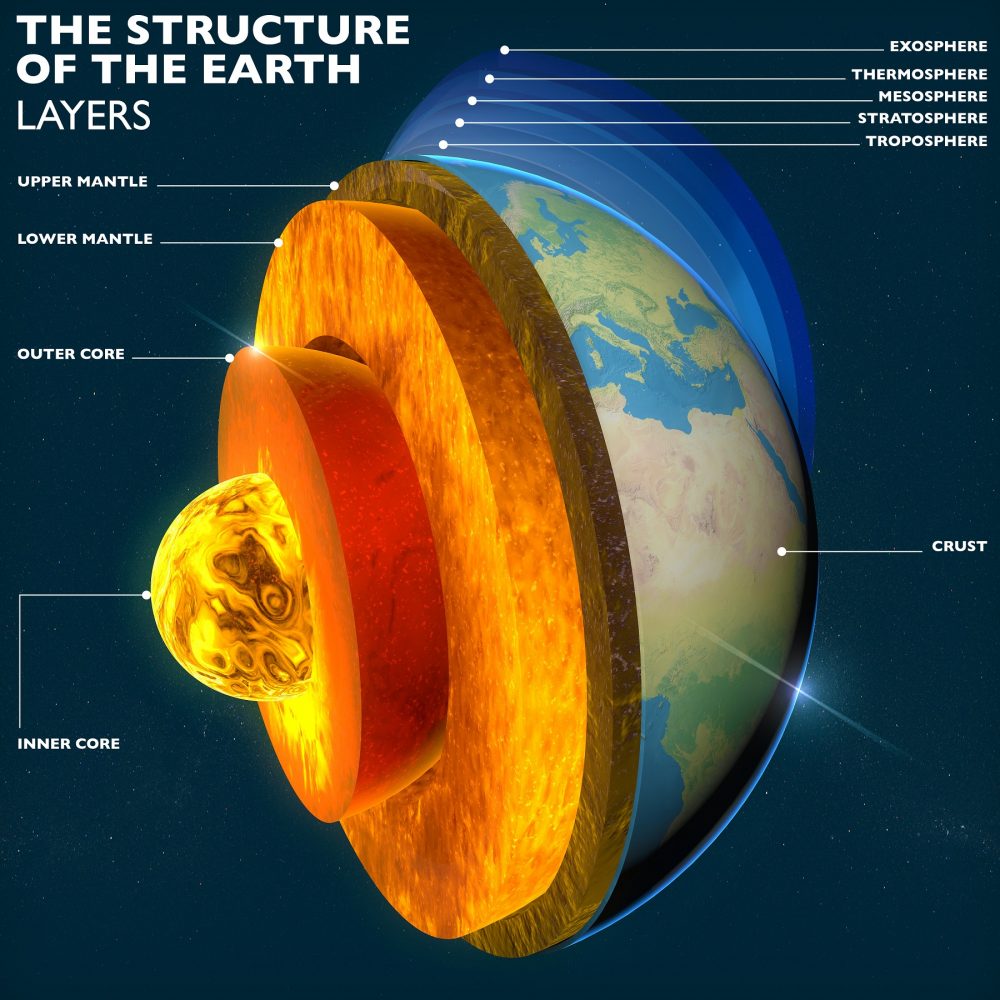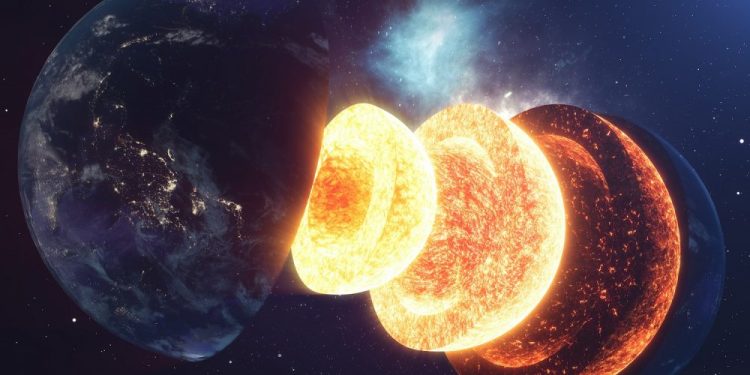According to new research, the country of New Zealand—which in turn sits on the sunken continent of Zealandia—is connected using ancient lava tubes to the Earth’s mantle.
New Zealand Sits on Ancient Lava Tube
Seismic wave speeds have revealed part of an ancient volcanic “superplume” below New Zealand, the largest in the world, highlighting the connections between Earth’s deep interior and our surface. Research by geophysicists at the Victoria University of Wellington, Professor Tim Stern, and Associate Professor Simon Lamb, along with their colleagues, indicates that the North Island is part of the “largest volcanic discharge” on Earth, created by an outcrop deep within the Earth.
3,000 km below Earth’s surface
That event occurred about 120 million years ago when a giant column of hot rock broke away from the boundary of the central mantle, about 3,000 km below Earth’s surface, and quickly rose to the surface as a super feather. An article on Professor Stern and Associate Professor Lamb’s findings from the College of Geography, Environment, and Earth Sciences has been published in Science Advances. Professor Stern says that the ancient superplume connected Earth’s deep interior to the planet’s surface.
In the 1970s, geophysicists proposed that Earth’s mantle undergo agitating motion, more like a lava tube, and hot floating rock formations rose like columns from Earth’s core. The melting of this rock near the surface could cause prolific volcanism, such as that observed in Iceland or Hawaii. Even in the geological past, there have been larger volcanic spills, of which the largest known occurred in the southwestern Pacific in the Cretaceous period during the time of the dinosaurs, forming an underwater volcanic plateau the size of a continent.
“Subsequently, the movement of the tectonic plates broke this plateau, and a fragment, which today forms the Hikurangi Plateau, drifted southward and now underlies the North Island and the shallow ocean offshore,” scientists revealed.

Speed of seismic waves
Professor Stern and his colleagues studied the speed of seismic waves (vibrations) through these rock layers to determine their origins and characteristics. The key observation in the new study is that the ‘P’ waves of seismic pressure, effectively sound waves triggered by earthquakes or artificial explosions, travel through the mantle rocks below the Hikurangi Plateau much faster than that is observed under most of the seabed, reaching speeds of 9 kilometers per second, the new research has revealed.
“A peculiar characteristic of these high speeds is that they are equally high for seismic vibrations traveling in all horizontal directions, but much lower for vibrations traveling vertically upwards,” the scientists demonstrated in the new study.
Difference between vertical and horizontal velocity
That difference between vertical and horizontal velocity allowed Professor Stern and Associate Professor Lamb to unite the rocks of the Hikurangi Plateau with those of the Manihiki Plateau in northern Samoa and the Ontong-Java Plateau in the northern Solomon Islands, which have the same speed characteristics. That showed that they were all part of the same superplume.
Associate Professor Lamb says it was a surprise that the “predicted flux for a giant mushroom-shaped superplume head would produce these very high velocities and this peculiar velocity distribution in the mantle rocks.
Important role in Earth’s history
“The associated volcanic activity may have played an important role in Earth’s history, influencing the planet’s climate and the evolution of life by triggering mass extinctions. It is intriguing that New Zealand now sits atop what was once such a powerful force on Earth.
Professor Stern says that the geological community had come close to rejecting the idea of plumes entirely. The direct evidence for its existence has been elusive. But, with this study, we now have compelling evidence that such feather activity actually occurred and a fingerprint method of detecting fragments of the largest feathers of all super feathering up close to the core of the Earth. A study published in Science Advances reveals that New Zealand sits atop a massive ancient lava tube that once reached Earth’s mantle in the distant past.
Have something to add? Visit Curiosmos on Facebook. Join the discussion in our mobile Telegram group.











